 |
| Main page | Background | Villages | Revitalisation | Cultural tourism | Map | |
Paanajärvi |
Paanajärvi Valkeakoski Power Plant -Project Paanajärvi, a site of WMW What to see Panorama Audio sample |
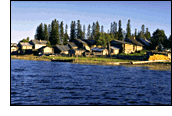 The
village of Paanajärvi is one of the oldest in Viena; it was inhabited
in prehistoric times in fact. In 1886 J.W. Juvelius brought Stone
Age objects found in the village to add to the collections in the
Finnish National Museum. In Korvenmaa, near the village proper, he
also found Lappish cairns and, under Valkehinen, now also known as
Valkeakoski, a sauna stove from an ancient fishing encampment. The
village of Paanajärvi is one of the oldest in Viena; it was inhabited
in prehistoric times in fact. In 1886 J.W. Juvelius brought Stone
Age objects found in the village to add to the collections in the
Finnish National Museum. In Korvenmaa, near the village proper, he
also found Lappish cairns and, under Valkehinen, now also known as
Valkeakoski, a sauna stove from an ancient fishing encampment.
There are no certain finds from the Bronze or Copper Ages, but some historical sources claim that the coast of the White sea was occupied by Karelians as early as the ninth century A. D. Before that time the area was inhabited by Sami (Lapps).
In 1879, Paanajärvi had 64 houses. In 1905, according to the official census, it had 73 houses and 427 inhabitants. At that time, the Paanajärvi district included eight other villages, yielding a total population of 1,029 people. When the Karelo-Finnish Soviet Socialist Republic existed, Paanajärvi first (beginning in 1935) belonged to the Kalevala (Uhtua) district and later, when all of the districts of Viena were combined, to the district of Kemi. Several years later the former district administration was restored, with the exception that Louhi became the administrative center of the northernmost district while Paanajärvi, with its substantial forest reserves, remained a part of Kemi. When Usma Rapids, the largest on the Kemijoki River, were harnessed and the village of Usmana inundated, Paanajärvi became the only remaining Karelian village along the river. The Kemijoki River and Paanajärvi The Kemijoki River in Viena is an age-old shipping route connecting
Scandinavia and Byzantium. In the fifteenth century, Russian settlement, supported by the recently founded Solovetsky Monastery, drove the Karelians from the coast, but they retained their villages along the rivers. The river routes were also used by warring troops. At the end of the 1500s, Paanajärvi and the other settlements along the Kemijoki were razed on several occasions. In 1617, after the Peace of Stolbova, clashes between the Russians and Swedes in Karelia abated, but only to start anew in the early 1700s. During the so-called "Peitto" Wars, Swedish troops advanced as far as Paanajärvi, where, legend has it, they intended to destroy the church but were blinded and had to retreat. The same legend says that the Swedes had visited Paanajärvi on peaceful missions as well - to catch river mussels.
By the late 1800s, the river was being used for log floating, which provided the people in Paanajärvi with work for a century. Log floating was discontinued in the beginning of the 1990s. When the borders were closed in the 1920s, the Kemijoki River became the maintenance route for western Viena, as trade with Finland was no longer possible. Before the Second World War, Paanajärvi was the only village in the district of Kalevala in which the people spoke Russian fluently. This earned them the name "Middle Russians" among the residents of Uhtua. When the highway connecting Uhtua and Kemi was completed and the hydroelectric power stations built, the Kemijoki lost its significance as a transportation route. The first rapids to be harnessed were those in Usma, and today there are a total of three power stations below Lake Paanajärvi. Above Lake Jyskyjärvi, in Kintismä, there is another power station, for which the lakes Alakuittijärvi and Keskikuittijärvi act as reservoirs. A dam and power station are also being planned at the Valkeakoski rapids, some 10 km downstream from Paanajärvi - a project that would inundate the village.
Research interest in Paanajärvi Following are the Finnish researchers and folklorists who visited
Paanajärvi:
- A.W. Ervast, 1879 Researchers in the last century did not obtain much epic poetry in Paanajärvi, nor did they record much other folklore, for they thought they would be more successful in other villages. Paanajärvi is nevertheless a promising research site today, for it is the last Karelian village along the Kemijoki River. It is the place where the log-floating tradition of Karelia is best preserved. Another interesting feature of the village is that it has been bilingual for centuries. It is interesting to compare how the same heritage material differs in different languages. At least cattle spells are still to be found in Paanajärvi in both Russian and Karelian. Paanajärvi is a particularly valuable site for studying the
building tradition. It is an intact village which has remained untouched
by war and liquidation efforts. Most of The long-standing ban on construction in the village in anticipation of the hydroelectric project has meant that no structures have been put up which interfere with the traditional village profile. There are some fifty houses left in Paanajärvi. The population of the village is slightly over one hundred persons, most of whom are pensioners. About 1.5 km from the village is Uusi Paanajärvi (New Paanajärvi), a relatively recent forest settlement with some 600 persons. This area has a complete school with 11 classes, a shop, a house of culture and a village council, which is also responsible for the old village. Most of the people in the settlement have their roots in the old village. The proposed hydroelectric plant would not inundate Uusi Paanajärvi, but the settlement would become an island.
Paanajärvi |
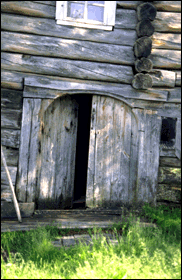
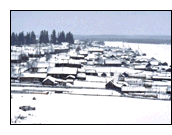 This
trade was at its height in the first millennium A.D.
This
trade was at its height in the first millennium A.D.
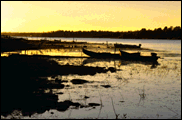
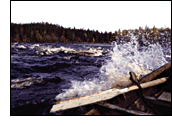 At
present, over one-third of the Kemijoki River is still in its natural
state. Eight rapids remain. A power station at Valkeakoski would
destroy them all, along with village of Paanajärvi, and the
river would be transformed into nothing but a series of reservoirs
for power stations. This would be a sad fate indeed for a river
whose reputation lay in its rapids.
At
present, over one-third of the Kemijoki River is still in its natural
state. Eight rapids remain. A power station at Valkeakoski would
destroy them all, along with village of Paanajärvi, and the
river would be transformed into nothing but a series of reservoirs
for power stations. This would be a sad fate indeed for a river
whose reputation lay in its rapids.
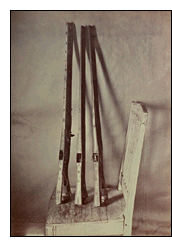 -
K.F. Karjalainen and I.K. Inha, 1894
-
K.F. Karjalainen and I.K. Inha, 1894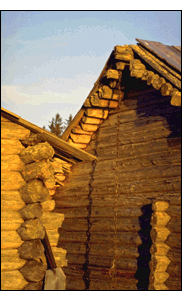 the
buildings in the village are built in the traditional Viena style,
that is, with dwellings and livestock shelters under the same roof.
In addition, many of the traditional details in the buildings have
been preserved.
the
buildings in the village are built in the traditional Viena style,
that is, with dwellings and livestock shelters under the same roof.
In addition, many of the traditional details in the buildings have
been preserved.